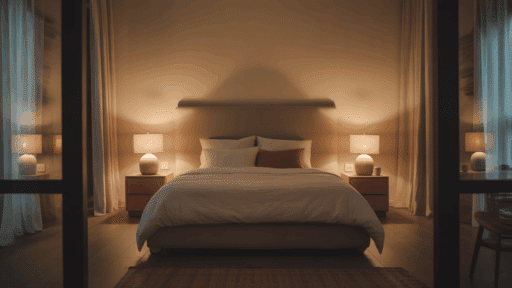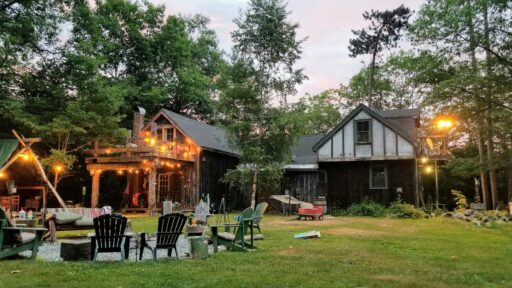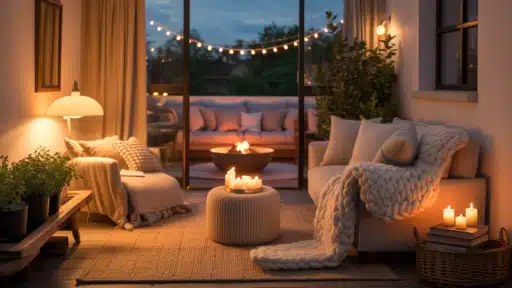Owning a home is a little like being handed the keys to a self-reliant kingdom, minus the moat and the castle staff. It’s rewarding, liberating, and often way more complicated than people let on. There’s always something to repair, replace, upgrade, clean, protect, or figure out—and that’s just before lunch. But the truth is, a lot of the noise about what you “need” as a homeowner is driven by marketing, not actual necessity. If you’ve ever felt overwhelmed trying to separate what matters from what’s just hype, you’re not alone. It’s easy to fall into that trap. So let’s take a breath and reset. Whether you’ve just closed on your first home or you’ve been in the game for decades, some essentials make real sense—not for the aesthetic, not for resale, but for actual daily living.
You Need A Fire Extinguisher, Not Just A Plan
Most people don’t think about fires until something’s already on fire. And once you’ve reached that stage, your window for doing something useful is measured in seconds. Everyone talks about having an escape plan (and yes, you should), but a working, easy-to-grab fire extinguisher is what buys you time before that plan even kicks in. The one that came with the house? Probably expired or the wrong kind. A good extinguisher—specifically one rated for ABC fires—can knock down a kitchen flare-up or a small electrical fire before it eats your cabinets and everything you love inside them.
Stick it somewhere you don’t have to dig for it. Top shelf of the pantry is a terrible idea unless you enjoy leaping into flames. Mount it on a wall near the kitchen or utility area where it’s out of the way but within reach. And no, you don’t have to be some DIY handyman to use one. Read the label once and you’re good. Most are pull, aim, squeeze, sweep. If you can use a Windex bottle, you can use this. It’s not overkill. It’s not paranoia. It’s peace of mind in a can.
Don’t Skip A Real Surge Protector
Everyone’s got power strips. They’re cheap, they make you feel a little more organized, and they let you run six things from one plug. But the bargain ones? They’re not surge protectors. They’re just glorified extension cords. That little green light doesn’t mean much when lightning hits or your grid hiccups in the middle of summer.
A real surge protector will list joule ratings and have an auto shutoff feature when it can no longer offer protection. It doesn’t have to be expensive—just certified and made for actual protection. If you’ve invested in a TV, gaming console, work-from-home setup, or honestly even just a fridge full of groceries, it’s worth it. Power surges are quiet and sneaky. You won’t even know one hit until your devices start randomly failing or flickering, and by then, the damage is already done.
It’s one of those small homeowner mistakes that nobody tells you about until it happens to them. Get ahead of it. You won’t regret spending $40 now instead of hundreds later.
Good Lighting Solves More Than Aesthetic Problems
Lighting is one of those weirdly overlooked basics that can make your house feel either warm and functional or like a hospital lobby. Most people default to overheads and call it a day, but layering your lighting with floor lamps, under-cabinet strips, motion-sensor night lights, and dimmable fixtures actually makes a home feel safer and more usable.
Low lighting in a hallway at 3 a.m. keeps you from tripping over your own dog. A well-lit exterior deters people who shouldn’t be on your property in the first place. Motion lights for your driveway mean you don’t have to fumble with your phone flashlight while unlocking the door.
And inside? It just feels better. You’ll notice you’re more relaxed when you can control the mood. The kitchen doesn’t need to feel like an operating room. Warm-toned LEDs and smart bulbs that shift throughout the day are affordable and easy to install. You don’t need an electrician. You need decent bulbs and maybe a screwdriver.
If You Own A House, You Should Own This Too
Power outages used to be a seasonal nuisance. Now they’re just… normal. Storms, overloaded grids, downed trees—take your pick. And when they happen, they don’t wait until you’ve finished cooking or taken your shower or charged your phone. The worst part? The silence that follows. It’s not peaceful. It’s a reminder of how many things suddenly stop working.
A portable generator for home use is one of those investments that feels over the top until the lights go out—and then it’s your best friend. Don’t go cheap here. Look for something with a solid wattage rating (enough to run your fridge, some lights, maybe the Wi-Fi and a space heater or fan). Pick one that’s safe for indoor connection via transfer switch or outlets with carbon monoxide monitoring. Gas-powered models work for short bursts, but there are also quieter, cleaner battery-based options if that’s more your speed.
The point is, you’re not prepping for doomsday. You’re prepping for a Tuesday night when the lights go off and you’ve got a toddler, a freezer full of meat, or just zero interest in sweating through your clothes while waiting on the power company.
Don’t Forget To Protect What’s Underfoot
Rugs and mats aren’t just for Pinterest points. They’re your house’s first line of defense against water, dirt, scratches, and the weird mystery goo that somehow always ends up tracked in from outside. Skipping them is like walking around in the rain without wiping your feet—eventually, it’s going to leave a mark.
Start with a legit doormat. Not a floppy thing that curls up in the wind, but one that actually scrapes and holds dirt. Inside, opt for washable rugs in high-traffic zones like the kitchen, hallway, and near any doors. These take the beating instead of your floors. It’s especially worth doing if you have hardwood or tile, because those can take on water damage or become a slip-and-fall zone real fast.
Also: bath mats. You’d think this would be a no-brainer, but a surprising number of people just step out of the shower onto slick tile like it’s an Olympic sport. Get one that dries quickly and doesn’t slide. You’re not too grown for a good bath mat. Trust.
The stuff that truly matters when it comes to maintaining your home doesn’t always show up in glossy ads or influencer reels. It’s the practical things—some boring, some oddly satisfying—that make the difference between feeling like your house owns you or the other way around. Nobody needs to live in fear of what might go wrong next, but a little planning now means you’re not scrambling later. You don’t need perfection. You need to be ready. And you don’t have to buy everything today. Just start with the things that make the biggest difference, and go from there. You’ve got this.








